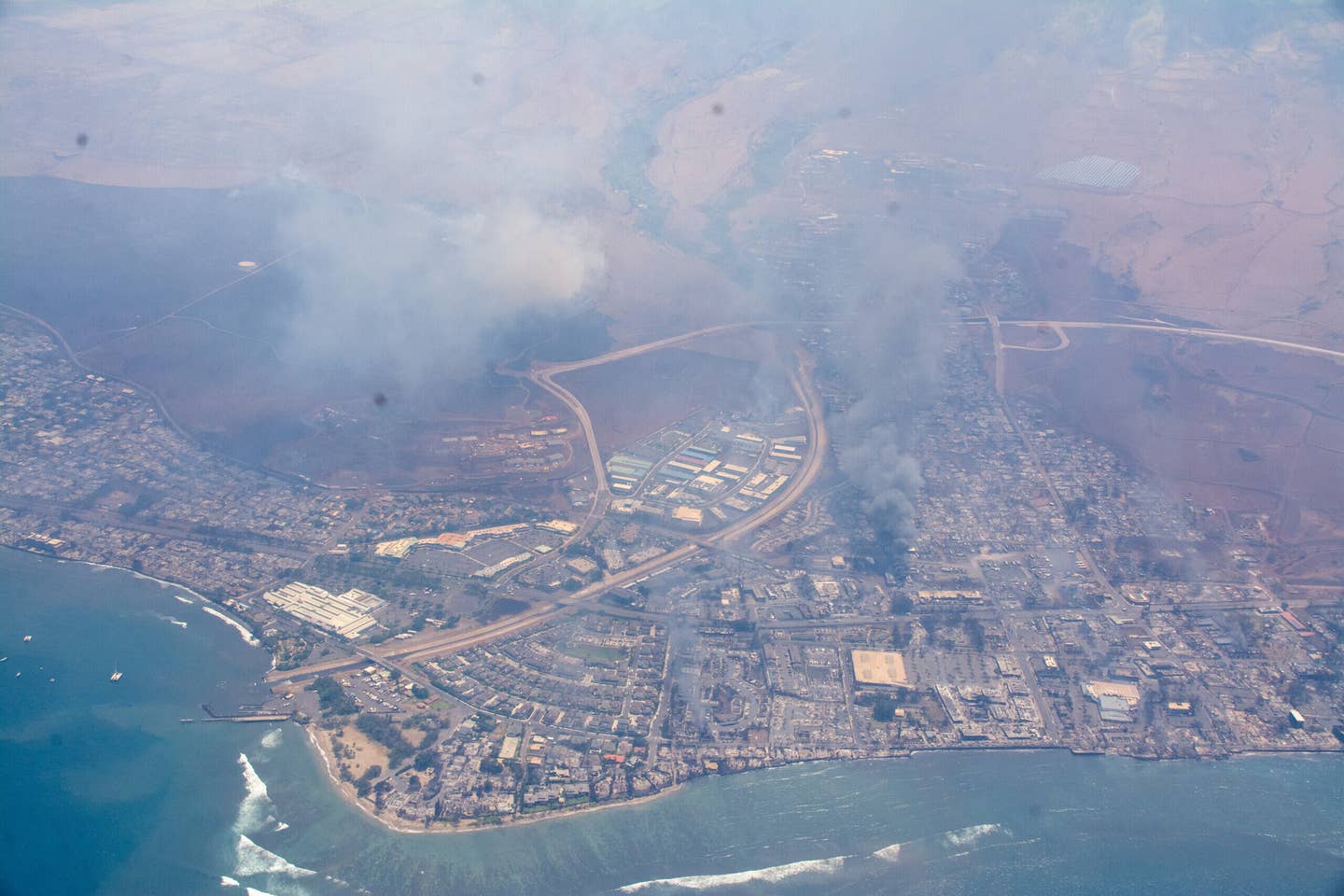Civil Air Patrol Responds to Wildfires on Maui
Photos of devastation from air were captured by CAP crews.

On August 8, the Hawaii Wing conducted two aerial survey, capturing shocking photos and videos of the extensive damage caused by the Maui brush fires. [Courtesy Civil Air Patrol]
The Hawaii Wing of the Civil Air Patrol has been pressed into service to help fight the devastating wildfires on the island of Maui. The CAP has been providing aerial reconnaissance of the fast-moving blaze that has killed more than 36 people and displaced hundreds more.
The fire broke out on Tuesday, August 8, and is being pushed by strong winds generated by an approaching Category 4 Hurricane Dora. The cause of the fire has not been determined. However, state officials and the national weather service note that Hawaii has been under a red flag warning because of dry conditions and high winds, which heighten fire danger.
On Tuesday, the winds were so high aerial support was not an option. When the winds died down, the Hawaii wing of the CAP conducted two aerial surveys of the devastation to look for changes in fire behavior that may threaten other communities.
Aerial photography captured by the missions shows streets reduced to ashes. The fire appears to have destroyed much of the town of Lahaina, a popular tourist destination. State media reported the fire moved so quickly that people ran down to the harbor to escape the flames. The U.S. Coast Guard rescued them.
According to the CAP, the photos "are being used to document and provide detailed information for damage assessment and search and rescue operations at various locations on the island."
According to the Seattle Times, Maui County officials say more than 270 structures have been damaged or destroyed, and dozens of people have been injured. The Maui fire is the deadliest in the U.S. since the Camp Fire that destroyed the town of Paradise in California in 2018 and killed 85 people.
About the CAP
The Civil Air Patrol was established in 1941 as an auxiliary of the U.S. Air Force and as such is a member of its Total Force. The CAP operates a fleet of 555 single-engine aircraft and 2,250 small unmanned aircraft systems (sUAS). The CAP is a non-profit organization that performs 90 percent of search and rescue operations in the contiguous U.S. The organization is also a leader in aerospace education, offering STEM-based courses (science, technology, engineering, and math) to cadets under 18.
This is a developing story that FLYING continues to follow.

Subscribe to Our Newsletter
Get the latest FLYING stories delivered directly to your inbox






